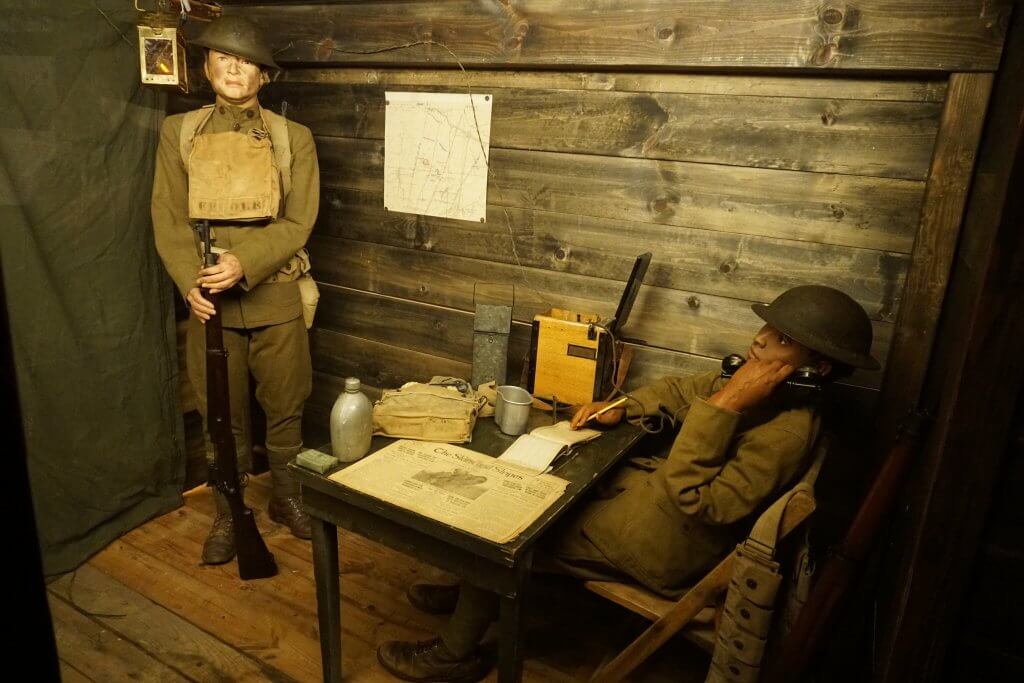Austin, Texas, offers visitors a plethora of entertainment and dining-drinking experiences — it even has one of the best bookstores in the country — and Longhorn sports, of course.
But substantive experiences? That’s where the Texas capital – home to a number of museums – comes in.
The Texas Military Forces Museum, which has no admission fee, should be the first one to investigate. Located on Camp Mabry, the headquarters of the Texas Military Department, it can easily stimulate the mind for an entire afternoon.
The myriad exhibits and galleries will surprise first-time visitors, who will learn more than a thing or two about a thing or two.
“It’s important for us to make the history of the Texas forces available to the public,” Lisa Sharik, the museum’s deputy director, said. “The Guard, in general, is often the poor stepchild of the military. Not many people know what the Guard is. We get a lot of visitors from foreign countries, and they have no concept of the difference between regular Army and Guard.”
The centerpiece is the Great Hall. There are almost too many displays to view — but that’s a good thing — from an M4A3 Sherman Tank and OH-23 Raven helicopter to World War II-era German kübelwagens and Sd.Kfz. 251 half-track.
Visitors have flown from Europe just to see the World War II German half-track, which is apparently rare, Sharik said.
The Texas Guard’s 112th and 124th Cavalry regiments served in the Pacific theater during World War II, and its 36th Infantry Division deployed to Europe.
A poignant exhibit recounts the story of the “Lost Battalion,” which consisted of the 2nd Battalion, 131st Field Artillery. Soldiers from the unit were interned by the Japanese and forced to work on the “Death Railway” — highlighted in the book and film “The Bridge Over the River Kwai” — resulting in a 25% casualty rate.
RELATED: Marine captures global adventures one post at a time
The engaging and well-designed 49th Armored Division, Cold War, and Global War on Terror Gallery depict Texas Guard missions from post-World War II through today. Items include a large piece of the Berlin Wall and rubble from the 9/11 attack on the Pentagon.
A “Great War” exhibit, featured in the 36th Infantry Division Gallery, tells the story of the Choctaw Code Talkers of World War I. The Choctaw were the original code talkers, long before the Marine Corps used the Navajo language during World War II. The 36th Gallery also contains a wooden Nazi eagle taken from Hermann Göring’s castle and an officer’s hat worn by German Field Marshal Erwin Rommel.
Not all the action is inside. Outside of the building are Armor Row, Artillery Park and Parade Ground. This vast collection of armored vehicles and artillery also includes an MGR-1Honest John tactical nuclear missile.
But it’s not just a place to glean and absorb history via exhibits and galleries. The museum contains a 7,000-volume research library along with 20,000 digitized photos. It receives research requests daily.
It also serves the military community.
“We provide the Hall of Honor Room for promotions, retirements… so we do things to support the soldiers and to help them,” Sharik said. “We’re trying to connect them to their lineage, to their history.”
The museum’s purpose, according to Sharik, is to communicate the ongoing story of the Texas National Guard. To explain how its overarching mission has intertwined and overlapped with other elements of the U.S. Armed Forces and how it was a crucial part of many historical military campaigns worldwide and in North America.
“And that’s one of the things that my boss, the director, is always saying, that ‘Our mission is to tell the story of the Guard for as long as it exists… it’s always making history,’” Sharik said.
For more information, visit the Texas Military Forces Museum website.
Editor’s note: This article incorrectly stated the location of the Texas Military Forces Museum and the unit known as the “Lost Battalion.” It has since been corrected.

